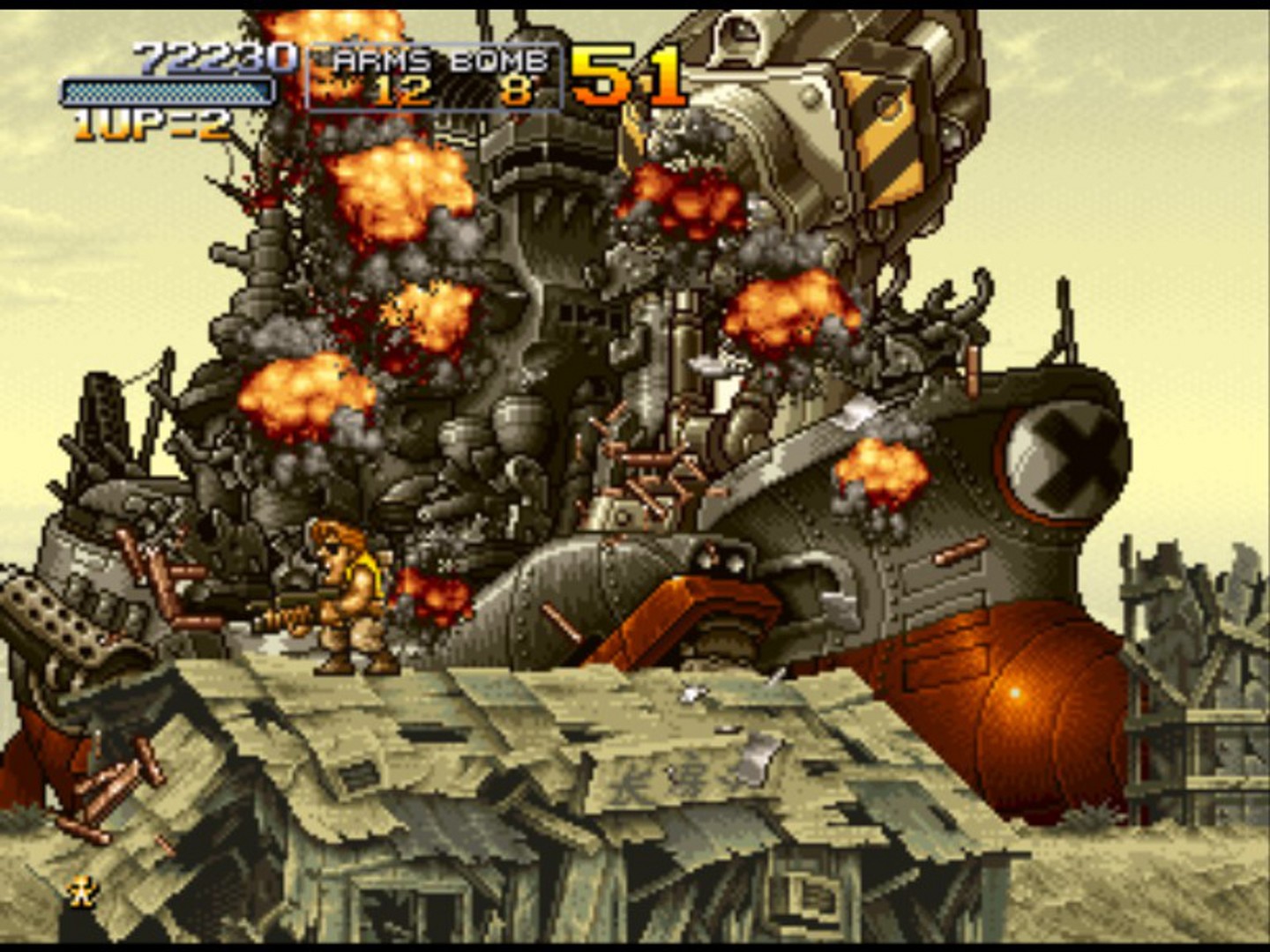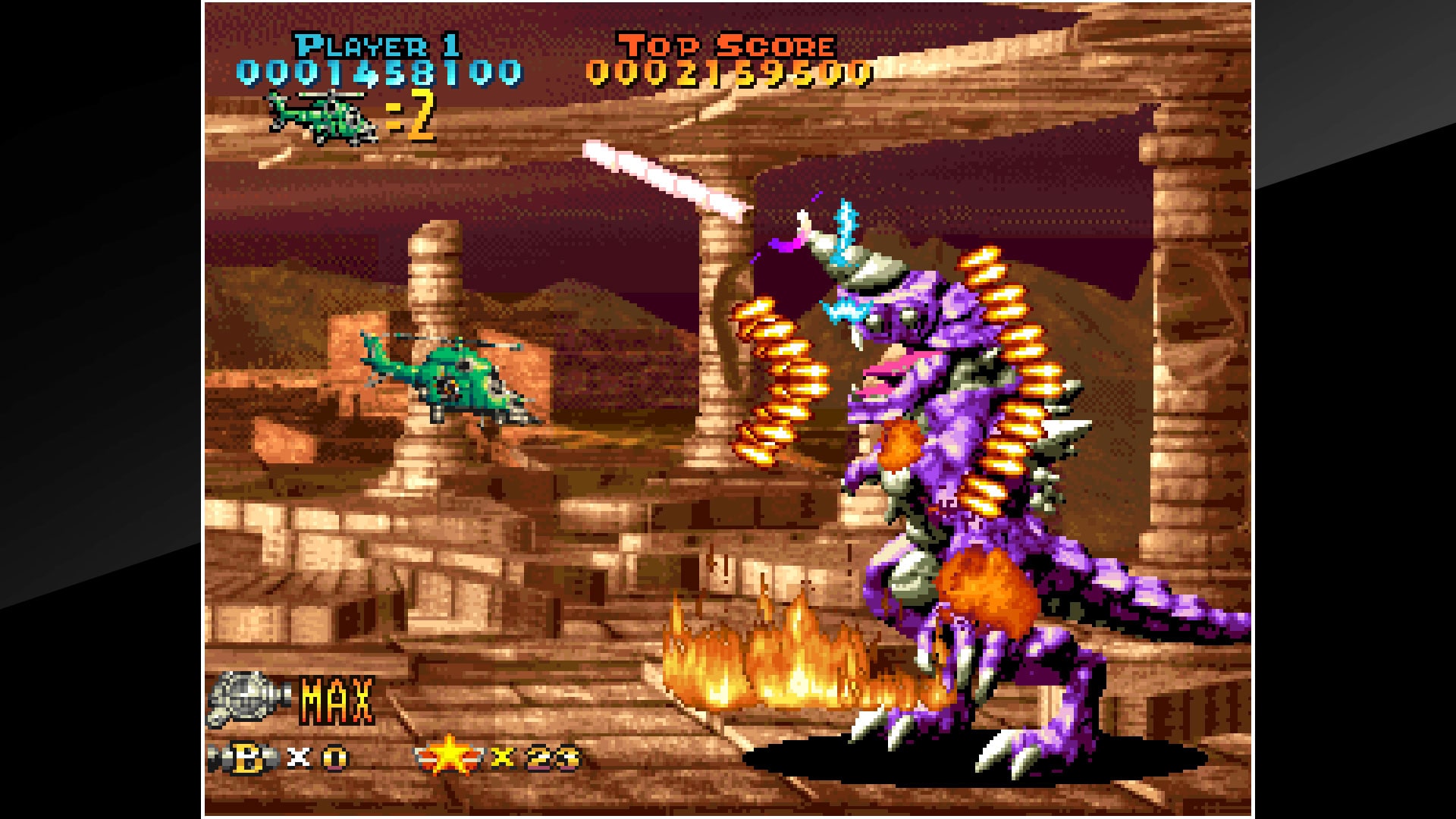In the real world, not a lot of note was going on in
1999. I think there was a guy who said
he did not have sexual relations with a woman and some kids shot up a school,
but the big impacts were being felt with our friends/enemies Capcom and SNK.
Late in 1998, SNK put out the Neogeo Pocket, a handheld
system of their design not unlike the Game Boy.
SNK had already done some portable work on Nintendo’s handheld with a port of Samurai Shodown
For the first time, SNK and Capcom would truly go head to
head, as M. Bison and Geese team up to run a fighting tournament where all
their company’s fighters would fight as a part of their evil plan! Finally you could show those Street Fighter
peasants or KOF losers that your company is better and use your skillz with
your favorite character!
This manpower being put into their handheld system is
presumably why there aren’t as many SNK games for this year. Capcom’s reason for fewer games was because apparently
not doing as hot in the arcades and they put more effort into releasing just a
few big games instead of the numbers they were pumping out in previous years.
That may have paid off because holy smokes is 1999 one hell
of a year. This year has both companies
at their best and there is not going to be a lot of negativity The year’s winner might be down to the wire.
Power Stone(CAP)
They cut the voice line off before he said “can I go home
now?”
The rest of the strategy is getting the stones in the first
place. When a character is hit
particularly hard (often by an item hit), they drop a stone and the scramble to
get them while both fighters are also throwing, shooting and smashing each
other, and while navigating the different stages, is a novel concept that could
only be done this well with 3D hardware.
Power Stone certainly stands out, being closer to a
competitive party game than a fighting game, but it feels like a first attempt,
even if it’s a successful one. There are
only 8 playable characters, 2 bosses (one of whom has a second form), almost no
story or characterization, a very limited selection of items and what I
perceive to be some gameplay imbalance.
Sometimes I feel like the announcer might as well start the
match by shouting “death from above” because the dive kick attack is way too
good. It automatically targets the
enemy, practically makes you invincible for the duration, instantly makes the
opponent drop a stone (without an item, you normally need to do a combo or
throw for that) and spamming it seems to carry little consequence. It’s practically necessary to abuse dive
kicking on the final boss because of how fast he can react to and strike back
against everything else. There were
several times where me and the computer would do almost nothing but divekick at
each other, which makes me think this is where the eponymous game got its first
spark of the idea.
That said, I don’t think it’s a great look for SNK that the
most notable part about Metal Slug X is that it corrects a mistake that
shouldn’t have happened in the first place.
Street Fighter 3: Third Strike(CAP): After two unimpressive installments, Street Fighter 3: Third Strike gives the game a major shot in the
arm. 5 new characters (including
Chun-Li) is a major leap in content from Second Impact and a new jazz and rap
mix for the sound design makes a soundtrack that has far more memorable tunes
and music that fits for the game’s pacing. It has the single best character select theme
in the history of fighting games too.
The refinement of the gameplay is the biggest upgrade
though. It doesn’t make any drastic changes
to the mechanics, but it’s all the little adjustments that made all the
difference. Knowing when to strike is
more important than ever. Missing an
attack or having it blocked can be a death sentence in Third Strike. In Second Impact you could play with the
mindset of previous Street Fighter games without adjusting to the new game too
much, but in Third Strike, missing an attack or having it blocked can be a
death sentence. That all goes triple
when it comes to the new character Q.
It is one of the weightiest 2D fighting games I’ve ever
played and that can be attributed to the adjustments to how much impact the
game presents. Attacks have weight to
them because the windup and cooldown to everything has just the right balance
of speed and feedback. The old “get one
good hit in” is especially true in Third Strike because you really feel the
impact and the damage when you land a hit as the opponent goes reeling back. It no longer has the unpolished feel of the
previous 2 Street Fighter 3 games. It’s
fine tuned to near perfection.
Even the single player content got an upgrade. They brought back the car destruction bonus
stage with a very nice-looking car sprite and now the rival battle
conversations at the end are actual conversations instead of one line of text
from each character. Returning
characters also have new endings this time, as Third Strike is kind of an
epilogue, with the endings having more to do with the aftermath of Gill’s
defeat. The actual plot was still vague
in English though.
Street Fighter 3: Third Strike is considered by many to be
the greatest fighting game ever made, which is an overstatement (I personally
would’ve liked more story than what we got by 1999), but it didn’t get that
reputation from nowhere.
KOF 99 is one of my favorite games in the series because it
hits all the things like in a fighting game while the previous games fell short
in some area. KOF 96 had the incredible
music and an engaging story, but the gameplay was a little janky. KOF 97 had no jank and a good story, but
dropped the ball on the music. KOF 98
succeeded in the gameplay and the music, but there was no story, although it
did have some fun with story references.
The King of Fighters 99 has the gameplay, story AND music. In fact it’s easily in my top 10 for greatest
fighting game soundtracks of all time. KD-0079
is one of the best songs ever composed.
Games like this are why I consider The King of Fighters to
be the best fighting game franchise there is.
The gameplay is fast-paced and exciting, the characters are full of
personality, the plot is well-presented and relatively simple in the moment,
but effective at building a bigger narrative, the characters are changed enough to
not feel like I’m playing the same game again, stages are full of detail, and
even change between rounds now, and the music should win awards. This was the perfect game to start off a new
saga.
I asked for more characters and I have received. This update of Jojo’s Venture
drastically ups the character count with several more of the villains from
Stardust Crusaders and all of them have the same level of care and attention as
the characters carried over from the original.
There are 2 different versions of Hol Horse (one with J. Geil and one
with Boingo), Mariah, Pet Shop, Anubis’ other hosts and Vanilla Ice now has a
playable version as well. They were even
able to put in my favorite villain, Rubber Soul (renamed Robber Soul), who in
the manga spends most of his panel time simply waiting for Jotaro to be killed by his stand.
Since there was so much effort put into making sure the main
heroes all got into the first version already, there wasn’t much left to add to
their side. The only new hero is a new
variant of Kakyoin after his eye surgery (something the original game never
brings up). Part of the narrative
strength of Stardust Crusaders is a focused traveling party, after all.
Every new character is unique and fun to play with stands that work very differently from the original cast, but sadly
none of them were very utilized for single player content. Every single newcomer’s story mode has one
intro screen, a series of fights with no context or dialogue and then a brief
ending with maybe one new piece of art.
Even if Capcom wasn’t going to put as much effort into everyone’s story
mode, they could’ve at least had one or two intermittent story scenes.
Alas, this is the arcade version and even though they
dropped the ball in one area, the new additions to the roster elevate Jojo’s
Bizarre Adventure to being on par with the best fighting games of the era.
Prehistoric Isle 2(SNK): SNK was really on their faux-3D
kick with their shooter games. Once
again this game looks gorgeous for a 2D game simulating 3D graphics. The dinosaurs look better than ever! It’s like you’re shooting the cast of Primal
Rage at times!
It’s no doubt enhanced by the Neogeo’s extra power compared
to the original, but once you get past how it looks it’s not much different. The key difference is that the action starts
in an urban area in what appears to be the modern day, rather than the titular
island, and there are short missions where you have to protect civilians while
they run to a rescue chopper. There
isn’t a lot to say about Prehistoric Isle 2 because it doesn’t really innovate
or try much of anything new. It’s just
another dinosaur-shooting adventure, this time with civilians. It’s alright.
Garou: Mark of the Wolves(SNK): It’s hard not to draw
comparisons between this game and the different versions of Street Fighter 3
(mostly Third Strike). Both games are
distant sequels to their previous games taking place after a previous villain’s
defeat, both have a cast of almost entirely new characters except for the
series mascots (Ryu and Ken for SF3, Terry for MOTW), both have extremely
smooth animations, both have a mechanic in which hitting the control stick in a
direction with perfect timing gives players a moment of invincibility (forward
for the SF3 counter, backward for the MOTW just defense) and both are often
cited as one of the best fighting games of all time even to this day. Hell, I think they even both had a slow
start. Not many people paid that much mind
to Third Strike when it came out after the underwhelming reception to the first
2 versions and Mark of the Wolves barely got an arcade release at all in
English, but both got more attention from fighting game fans as the years went
on.
For a series called Capcom vs. SNK, I think it’s only fair
to take that comparison further. In
gameplay, Mark of the Wolves is faster and though there’s a lot of weight and
more cooldown to attacks than a game series like KOF, whiffing and being
blocked isn’t nearly as dangerous as in Third Strike. Which game plays better depends on what
you’re looking for. Mark of the Wolves
has a lot more pressure game and a few mechanics unique to it, like the
universal overhead attack and TOP attacks.
 |
| They also all have unique victory lines for each character. |
It has the edge in the audio too. Mark of the Wolves’ music is some of the best
ever. Third Strike’s music is kind of
calming and helps you focus, but MOTW’s music brings the hype to every single
match and when I’m playing a fighting game, I want hype.
To top all of this off, super moves in Mark of the Wolves
really feel like they hit hard, helped by the way a
super attack finisher is accentuated. In
Third Strike, finishing off an opponent with a super attack changes the
background, stops in that brief moment so you can really take it in, makes a
little warping sound effect and calmly says “KO.” That works well enough, but in Mark of the
Wolves, finishing off an opponent with a super attack in a deciding round
changes the background and triggers a sick guitar riff while a big red animated
“K.O.” smashes onto the screen and the metal victory song specific to the
occasion plays! It’s the best feeling.
There’s only one thing about Mark of the Wolves that peeves
me and that’s the endings. I can count
on one hand the number of times I’ve gotten an ending for Mark of the Wolves
and I’ve played it for well over 8 years.
Outside of those very scant few times it always ends with defeating the
first boss before he says goodbye and the game cuts to the credits. Supposedly the way to fight the true final
boss and get an ending is by getting a high enough average in the grades you get after each round, but I get the bad
ending even when I absolutely dominate every enemy and don’t lose a single
round!
Finishing Mark of the Wolves’ arcade mode isn’t as long as
other fighting games so you can keep trying, but this nigh-impossible task of
getting the endings is the biggest blemish in what is otherwise one of the
greatest fighting games ever made. It’s
not just game of the year. It might be
the arcade game of the decade. If I’m at
an arcade and someone asks me if I want to play Third Strike, I’ll only play it
if they don’t have Mark of the Wolves.
The Winner
This might be the hardest one yet. Both companies brought out some of the very
best games ever made at this point in time and the games that weren’t the best
were still varying degrees of great with not one weak game among them. With how close this call is, I decided to
rank the games and use a point system, where first place gets 8 points, second
gets 7 and so on.
1. Garou:
Mark of the Wolves
2. Street
Fighter 3: Third Strike
3. The
King of Fighters 99
4. Jojo’s
Bizarre Adventure
5. Metal
Slug X
6. Power
Stone
7. Giga
Wing
8. Prehistoric
Isle 2








No comments:
Post a Comment